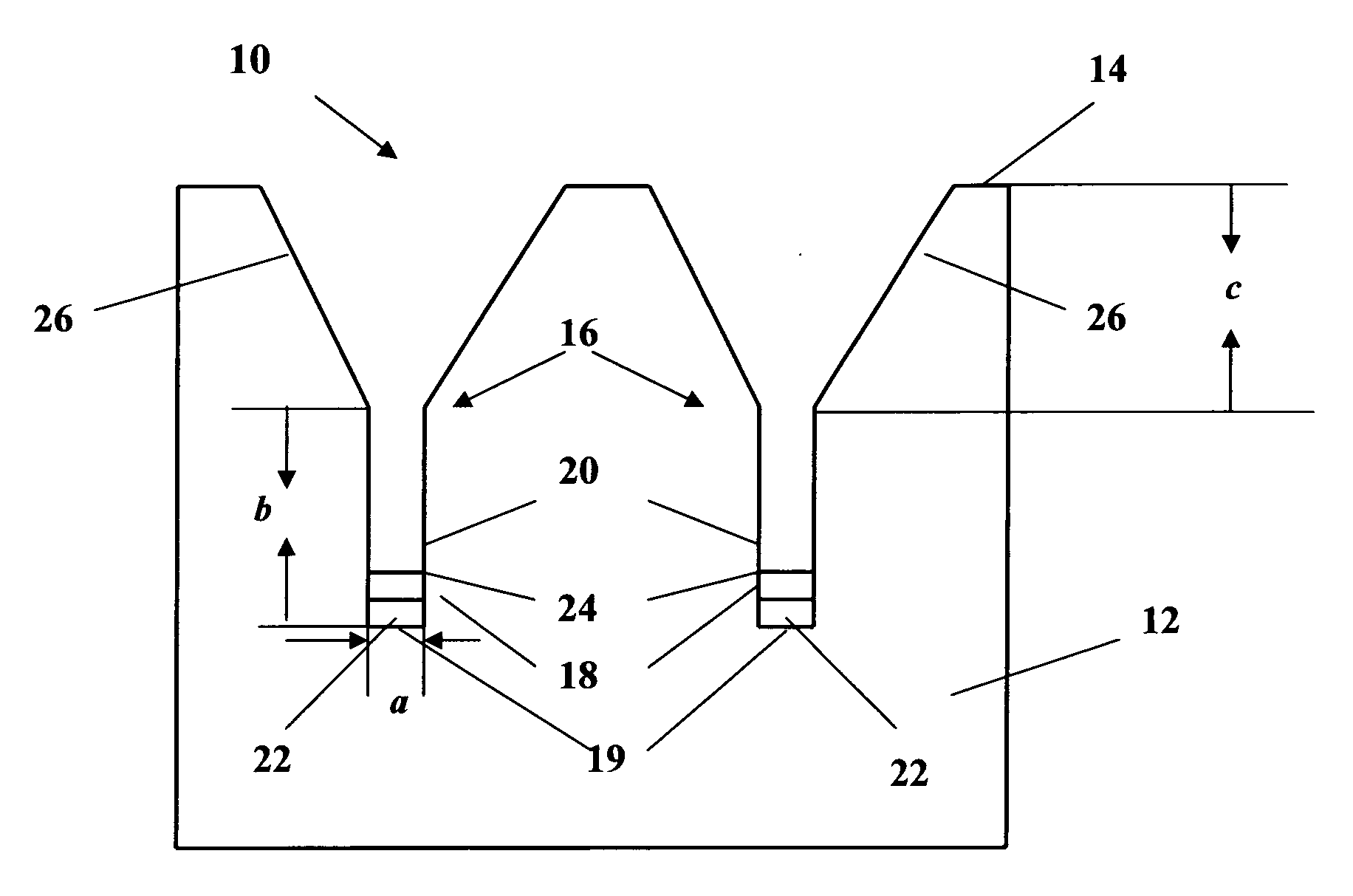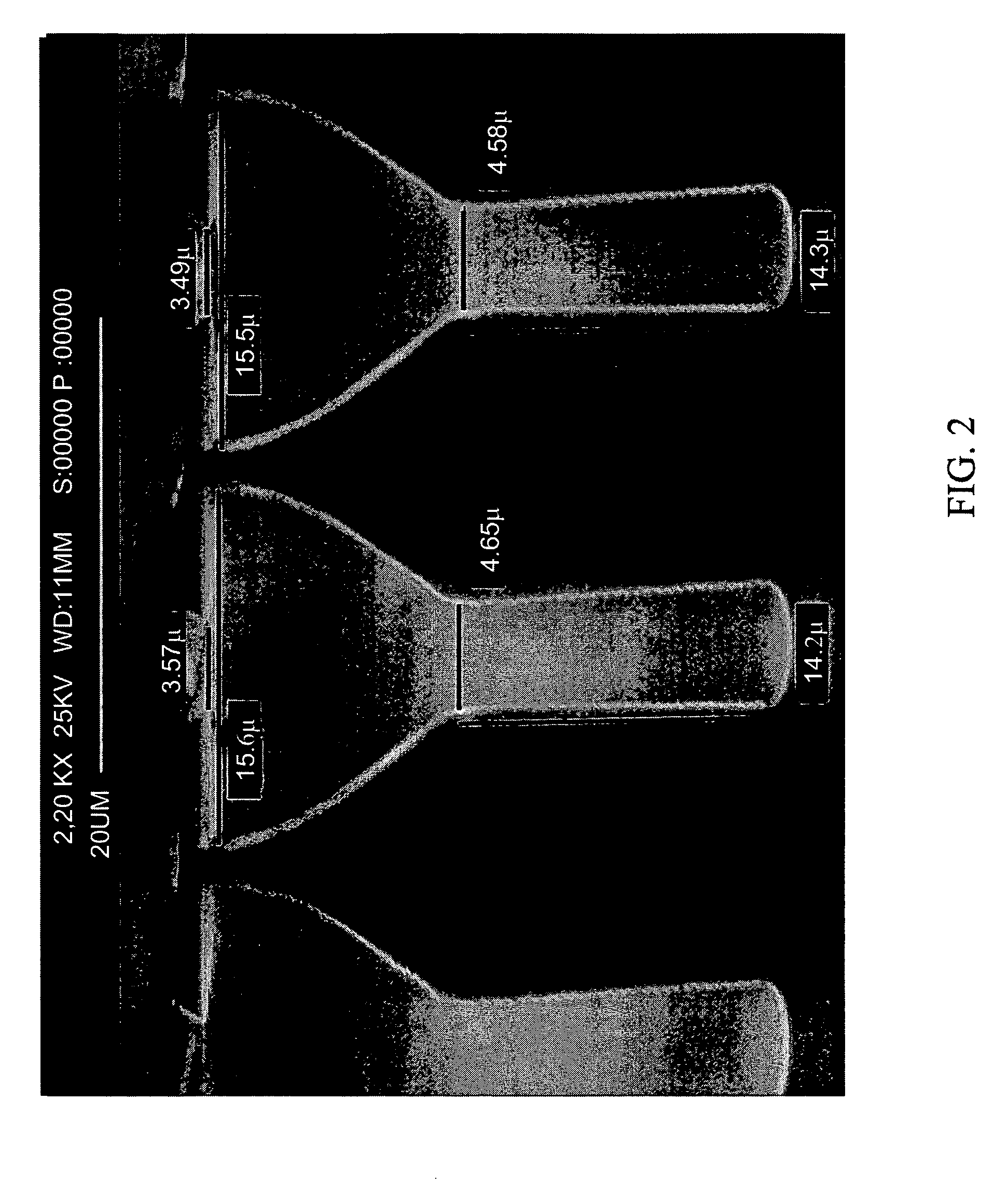Photovoltaic device and method of its fabrication
a photovoltaic and photovoltaic technology, applied in the direction of semiconductor/solid-state device manufacturing, semiconductor/solid-state device manufacturing, electrical apparatus, etc., can solve the problems of increasing cell series resistance, increasing resistive power loss, and reducing resistive power loss at the expense of larger shading loss
- Summary
- Abstract
- Description
- Claims
- Application Information
AI Technical Summary
Benefits of technology
Problems solved by technology
Method used
Image
Examples
Embodiment Construction
[0036]Referring to FIG. 1, there is schematically illustrated a cross sectional view of a photovoltaic device, generally designated 10, according to an embodiment of the invention. The device 10 includes one or more photovoltaic cells electrically connected in series. The cell(s) is / are fabricated in a semiconductor substrate (wafer) 12, typically silicon p-type substrate. The substrate 12 has a patterned surface 14, the pattern comprising an array of spaced-apart grooves 16. The groove 16 has a bottom portion 18 configured as a deep narrow cavity having a bottom surface 19 and side walls 20 substantially perpendicular to the surface 14 of the structure 10.
[0037]Such arrangement of the side walls 20 substantially perpendicular to the surface 14, or the so-called “substantially vertical” bottom portion 18 can be obtained by making the side walls 20 parallel to each other or arranged with a small angle between them. In the latter case, the configuration is such that a distance between...
PUM
 Login to View More
Login to View More Abstract
Description
Claims
Application Information
 Login to View More
Login to View More - R&D
- Intellectual Property
- Life Sciences
- Materials
- Tech Scout
- Unparalleled Data Quality
- Higher Quality Content
- 60% Fewer Hallucinations
Browse by: Latest US Patents, China's latest patents, Technical Efficacy Thesaurus, Application Domain, Technology Topic, Popular Technical Reports.
© 2025 PatSnap. All rights reserved.Legal|Privacy policy|Modern Slavery Act Transparency Statement|Sitemap|About US| Contact US: help@patsnap.com



